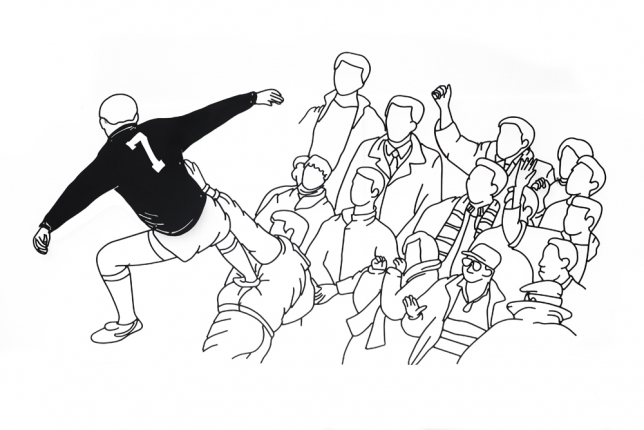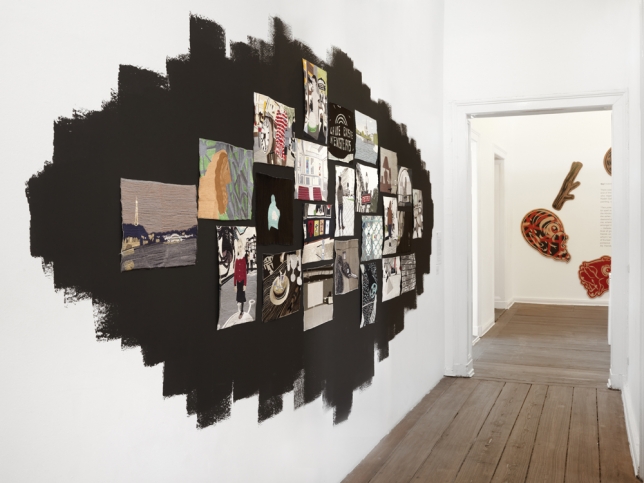SIP! INDONESIAN ART TODAY / SENI RUPA INDONESIA KINI
The past three generations of Indonesian Contemporary Art
Group show by ARNDT Berlin
27 April to 01 June 2013
Tue – Sat, 11am – 6pm
Please click here to watch a video of the "Sip! Indonesian Art Today" show in Berlin.
The exhibition "Sip! Indonesian Art Today" and the accompanying publication results from ARNDT’s recent focus on Southeast Asian art and the new Asian and Pacific art markets. Over the past four years Matthias Arndt has worked in Indonesia and other parts of Southeast Asia. His research, the past shows of Southeast Asian artists and the opening of ARNDT Singapore, the Asian showroom and office of ARNDT, makes Matthias Arndt one of the leading experts for contemporary Indonesian and Southeast Asian Art in Germany and Europe.
The exhibition "Sip! Indonesian Art Today", curated by Enin Supriyanto, is the 10th show dedicated to Southeast Asian art ARNDT is hosting in Singapore, Australia, Great Britain and Berlin. The 150 page publication "Sip! Indonesian Art Today" edited by Matthias Arndt and published at DISTANZ Verlag (ISBN 978-3-95476-007-7) is available in all bookstores.
The public talk "The last three decades of artistic production in Indonesia: 25 years of Cemeti Art House and the status of curating.” with Enin Supriyanto (curator) and Mella Jaarsma (artist), moderated by Katerina Valdivia Bruch (curator / critic) will take place at ARNDT Berlin on 27 April 2013 at 4 pm.
The exhibition presents over 40 works from all artistic mediums, painting, sculpture, installation, photography and film, by 16 contemporary artists from Indonesia. They belong to a larger community of artists who are actively shaping Indonesia’s dynamic developing contemporary art scene. If we consider their age and career development, the artists here represent 3 generations of contemporary art practice dating back from the late 1970s: beginning first with FX Harsono, one of the proponents of the Indonesian New Art Movement (Gerakan Seni Rupa Baru) founded in 1975 followed by a group of artists who emerged at a time when Indonesia was undergoing major socio-political transformations in its strive towards democracy during the late 1990s (Agung Kurniawan, Agus Suwage, Mella Jaarsma), the post-Reformasi (Reformation) generation of artists (Christine Ay Tjoe, Entang Wiharso, Rudi Mantofani, Handiwirman Saputra, Eko Nugroho, Syagini Ratna Wulan and Arin Dwihartanto Sunaryo), and finally a generation of artists who have been active in the past decade, sophisticated operators of their own careers in a more or less stable and democratic Indonesia (Wedhar Riyadi, J. Ariadithya Pramuhendra, Wiyoga Muhardanto, Indieguerillas and Tromarama).
The generational differences do not only represent differing socio-political experiences in connection with the development of Indonesia’s society in the past three decades but also illustrates the differing socio-political contexts of the artists observations and artistic approaches that have changed and altered over the years.
The word “Sip” in Bahasa Indonesia may be a simple and modest one but it is full of meaning. While the origin of this word is unknown, it is a word that is used by nearly everyone every day. “Sip” is the briefest way to state that something – whether an art work, an event, an experience or anything – is good, of good quality, super or outstanding even. Like this word, and like the process of our ongoing global culture, we do not question the origin of an idea, but we consider how this idea can continue to grow and contribute to the interaction and civilization of the world. In a way, we can say that ‘Sip’ has no such thing as exotic cultural background, neither stereotypical cultural baggage. Whatever the case, the meaning is clear: good, great, outstanding.
FX Harsono | Mella Jaarsma | Agung Kurniawan | Agus Suwage
Wedhar Riyadi | Christine Ay Tjoe | Eko Nugroho | Entang Wiharso
Handiwirman Saputra | Arin Dwihartanto Sunaryo | Syagini Ratna Wulan | Rudi Mantofani
J. Ariadhitya Pramuhendra | Wiyoga Muhardanto | Indieguerrilas | Tromarama
For more information and images, please contact info@arndtberlin.com or +49 30 206 13870.
Please click here to download the press release as PDF file (English)
Please click here to download the press release as PDF file (German)











